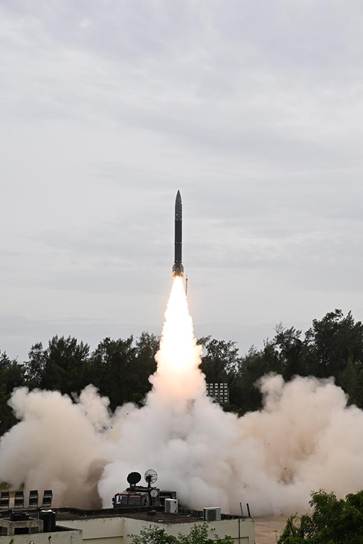(Forelines) – Defence Research & Development Organisation (DRDO) completed two consecutive successful flight-tests of Pralay missile from Dr APJ Abdul Kalam island off the coast of Odisha on July 28 & 29, 2025. The purpose of the flying tests was to confirm the missile system’s maximum and minimum range capabilities as part of the User Evaluation Trials, India’s Ministry of Defence said in a statement.
The missiles met all test objectives by exactly following the desired trajectory and arriving at the target spot with pinpoint accuracy. Test data from many tracking sensors installed by the Integrated Test Range (ITR), including instruments placed on board the ship close to the impact point, confirmed that all subsystems operated as expected.
Pralay is a solid propellant quasi-ballistic missile that was developed indegenously It uses cutting-edge guidance and navigation to guarantee extreme precision. The missile may carry different kinds of warheads to hit different kinds of targets.
The system was developed by Research Center Imarat in partnership with other DRDO labs, including the Defense Research & Development Laboratory, Advanced Systems Laboratory, Armament Research & Development Establishment, High Energy Materials Research Laboratory, Defense Metallurgical Research Laboratory, Terminal Ballistics Research Laboratory, Research & Development Establishment (Engineers), and ITR, in addition to industry partners Bharat Dynamics Limited & Bharat Electronics Limited and many other industries and MSMEs.
In addition to industry representatives, senior DRDO scientists and representatives of the Indian Army and Air Force users observed the flying testing.
Indian Defence Minister Rajnath Singh has praised the industry, DRDO, and the armed forces for the successful flight tests. According to him, the missile with contemporary technology will further advance the Armed Forces’ technological capabilities in the face of threats.
Chairman of DRDO and Secretary of the Department of Defence R&D Dr. Samir V. Kamat, thanked the teams and stated that the successful completion of the phase-1 flight testing opens the door for the system to be introduced into the Armed Forces soon.

